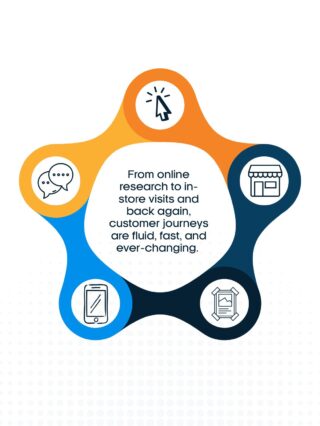The PulsePoint HealthNEXT Annual Summit brought together some of the brightest minds in healthcare marketing, including brand leaders, agencies, and healthcare professionals (HCPs), to tackle the industry’s most pressing challenges. From taking the stage to discuss platform success to joining conversations on breaking through EMR clutter and overcoming patient inertia, the day was full of thought-provoking ideas and practical solutions.
Here are the big themes that stood out to us:
1. Making EMR Messaging Count
Electronic Medical Records (EMR/EHR) are overflowing with information, and HCPs are bombarded daily. The takeaway? Keep it concise, clear, and actionable. Messaging at the point of care should support, not slow, a physician’s workflow. The goal is to “divert the river, not dam it” by directing the flow of information toward what truly matters: dosing details, side effects, and key benefits that can help guide patient conversations.
2. Branded Content is Trusted Content
HCPs consistently view manufacturer-branded information as a reliable source of truth because it is rigorously vetted by the FDA. Alongside society guidelines and patient advocacy group resources, branded content plays a pivotal role in education, making it an essential tool for building credibility.
3. Overcoming the Patient Inertia Mountain
Many patients are reluctant to switch therapies, even when a change could significantly improve outcomes. The marketing challenge is to equip physicians with the tools to help patients understand the reasons behind a switch. Educational materials, personalized content, and stories of improved quality of life can all help address fears and break down barriers to change.
4. Meeting Patients Where They Are
HCPs make quick assessments about how to deliver a diagnosis based on a patient’s age, preferred communication style, and ability to digest information. One size does not fit all. Quick-reference materials, such as QR codes linking to short videos, can be powerful takeaways for patients, especially when tailored to the HCP’s style or even their personal look.
5. All Media is Performance Media
Every channel in a healthcare marketing plan serves a purpose. Performance is relative. It is about using the right measurement framework for the right channel. The most successful plans do not silo media types but instead look at how they work together to drive outcomes.
6. The Evolving Role of AI
AI is reshaping healthcare marketing in two distinct ways:
- Pragmatic AI focuses on streamlining operations, improving efficiency, and keeping internal systems organized, but is only as strong as the data it is given.
- Transformative AI unlocks new creative opportunities, accelerates audience targeting, and brings bold ideas to life.
The industry still wrestles with a disconnect. There is a willingness to pilot new strategies, but measurement often relies on outdated models. To fully realize AI’s promise, innovation in execution must be matched with innovation in analysis.
7. The Power of Alignment
One of the clearest takeaways was that when brands and agencies are aligned on goals from the outset, performance follows. This is not just about collaboration. It is about a shared vision, clear communication, and constant refinement as the market evolves.
Our Take
PulsePoint HealthNEXT was a reminder that healthcare marketing is ultimately a human endeavor built on trust, driven by clarity, and powered by collaboration. Whether it is cutting through EMR noise, helping patients overcome hesitation, or leveraging AI for smarter strategies, the opportunities are there for those willing to adapt, test, and learn.
At Butler/Till, we’re committed to sharing our key takeaways from leading industry events to help our healthcare clients stay ahead of emerging trends and opportunities.
Contributors: Maggie Leathersich, Shauna Pignone, Pat Cronin, Shayna Scherer




